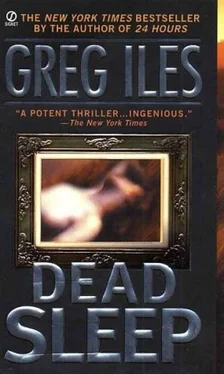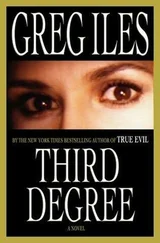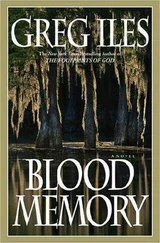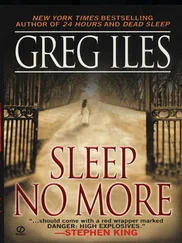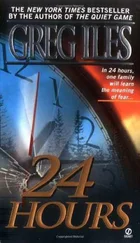“The name sounds familiar.”
“Wheaton is one of the most highly regarded artists in America. He’s fifty-eight years old, and he came to Tulane just two years ago.”
“About the time the disappearances started,” says Bill Granger.
“Wheaton was raised in Vermont,” Baxter continues, “and except for four years spent in the marine corps, lived his life between Vermont and New York City. For the past ten years he’s been besieged by offers like the one that brought him to Tulane, but he’s something of a recluse, and he always rejected such offers before. But two years ago, he accepted the position at Tulane.”
“Why?”
“We’ll get to that in a minute. The main point is that Wheaton didn’t order the special sable brushes only for himself. He has three graduate students taking studio classes for full credit, and they’ve been studying under him since he arrived. Two are male, and followed him down from New York. The other is a woman, a Louisiana native.”
“One of your suspects is a woman?”
“She has access to the sable brushes, and the taser used in the snatch of the Dorignac’s victim makes a female perpetrator possible.”
As unlikely as this sounds to me, I go right to my next question. “Wheaton brought his own students with him?”
“Tulane hired Roger Wheaton for his reputation. It’s a feather in their cap to have him, and he was given absolute. discretion over whom he would select for his program. Wheaton also teaches a lecture class – fifty-one students -and any of them could conceivably have got hold of these brushes. But we’re not going to use you in that phase of the investigation. Wheaton and the three graduate students will be our targets.”
“When are we talking to them?”
“Tomorrow. All of them, no matter how long it takes. I want to minimize any chance of interaction between them prior to questioning. Before we go into details, though, you should understand our position in the present climate. The Investigative Support Unit normally works in an advisory capacity for state or local police agencies. We provide expertise relating to serial offenders, but the police do the legwork. They conduct the interviews, make the arrests, and get the credit. However, in a long-running case like this one, where we have knowledge that crimes will likely be committed in the future, we become heavily involved in all aspects of the investigation.”
“I understand.”
“We have a unique situation here in New Orleans. The spread-out nature of the city has created a jurisdictional nightmare. There are seven separate police departments involved in these disappearances. And though not all of them have homicide detectives, there are over two dozen detectives working this case. We’re presently leading the joint task force, but all these police detectives would like to interview Wheaton and his students. However, the most potent weapon anyone could have in such an interview, Ms. Glass, is you. And to put it bluntly, you’re on our team.”
“For the moment.”
Baxter gives Kaiser a quick glance, but Kaiser remains expressionless. “We’ve also managed to gather many of the Sleeping Women at the National Gallery in Washington, something metropolitan police agencies could never have managed. Because of this, and because of jurisdictional rivalry, we’re going to be given the first shot at these suspects. All four have been under surveillance from the time they were identified, but they won’t be approached until after we go in tomorrow. The pressure on this investigation is enormous. The victims in this case come from affluent families. One of the Tulane students was – is – the daughter of a federal judge in New York. So, while we interview Roger Wheaton at the university, NOPD will be searching his residence from top to bottom. We’re already turning his life inside out, insofar as it exists on paper. His three students get the same treatment, though I’m not optimistic in two cases. Investigating art students is like investigating waiters; they almost don’t exist on paper. Right now none of the four has a paper alibi for the Dorignac’s snatch. All four were at an opening at the New Orleans Museum of Art until seven-thirty p.m. The chancellor verified that. Beyond that we know nothing.” Baxter’s dark eyes burn into mine. “Tomorrow, Ms. Glass, we are the point of a very bulky spear. We have to hit our target. If we miss, we lose the best chance we’ll ever have to surprise our UNSUB into a confession.”
“I get it. Let’s have the details.”
Baxter shuffles a stack of papers. “I’m going to give you a quick sketch of each,” says Baxter. “This is for John’s benefit, too.”
SAC Bowles gets up and kills the lights, and a large screen hanging from the ceiling at the end of the room comes alive with white light.
“I want you to see all four first,” Baxter says. “See if any look familiar. Then we’ll break them down. These images are being relayed from our Emergency Operations Center, which is also on this floor.” Baxter leans forward and addresses the speakerphone on the desk. “Give us the composite, Tom.”
Four photos appear simultaneously on the screen. None looks familiar, or even like what I expected, but why would they? My mental picture of artists comes from books and films, mostly images from other centuries. When I hear the word “students,” I think of people in their twenties. The oldest here – Roger Wheaton, I presume – is wearing bifocal glasses and reminds me of Max von Sydow, the actor. Severe and Scandinavian-looking, with shoulder-length gray hair. Beside his photo is a fortyish guy who looks like an ex-convict: hollow-eyed, unshaven, tough. Then I realize he’s actually wearing prison garb.
“Is that guy a convict?”
“He’s done two stretches in Sing Sing,” says Baxter. “We’ll get to that. We’ve got a real grab-bag of weirdos, here, I kid you not.”
“Is that a scientific description?” asks Kaiser.
Bowles belly-laughs.
“These faces ring any bells?” asks Baxter, cutting his eyes at me.
“Not so far.”
The other man in the composite is stunningly handsome, and my sixth sense tells me he’s gay. I generally make this judgment based on physical appearance, speech, and behavior. All I have here is a photograph, but I’ve spent most of my life studying photographs, and this guy I feel certain about. The woman is also attractive, with long black hair, light skin, and black eyes. But despite her skin tone, something about her features suggests African blood.
“The older man is Roger Wheaton,” says Baxter. “The convict is Leon Isaac Gaines, age forty-two. Raised in Queens, New York. The third man is Frank Smith. He’s thirty-five, and also a New York native. The woman is Thalia Laveau, thirty-nine, a native of Terrebonne Parish here in Louisiana.”
Now I’ve got it. Thalia Laveau is a Sabine, a racial group the FBI has probably never even heard of.
“All four suspects lived in New York for a time,” says Baxter, “so all could have ties to whoever killed Wingate.” He leans toward the speakerphone. “Put up Wheaton alone.”
The composite vanishes, replaced by a candid shot of Roger Wheaton. The artist has deep-set eyes behind his bifocals, and a long, strong face. He looks more like a craftsman than a painter, a genius with metal or wood.
“Before we do his bio,” says Baxter, “let’s deal with why Wheaton came to New Orleans. Three years ago, this reclusive artist of international reputation was diagnosed with scleroderma, a potentially fatal disease.” Baxter turns to Dr. Lenz. “Arthur?”
Lenz sniffs and inclines his head toward me as he speaks. “Scleroderma is commonly thought of as a woman’s disease, but it does affect men, and usually with more severity. The external symptoms, such as hardening of the facial skin, et cetera, are not always obvious or even present in men, but the internal damage is accelerated. Scleroderma is vascular in nature, and causes scarring and eventual failure of the internal organs, including the lungs. One particularly important symptom in Wheaton’s case is called Raynaud’s phenomenon. This is a spasm and constriction of the blood vessels of the extremities – usually the fingers, but sometimes the nose or the penis – which is caused by contact with cold temperature, usually air or water. These attacks completely cut off circulation to the digits, sometimes for long enough to cause irreversible tissue damage. Amputations aren’t uncommon. Sufferers frequently wear gloves for most of the day.”
Читать дальше
Конец ознакомительного отрывка
Купить книгу
